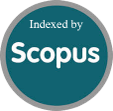Impact of coaching and managerial skills applied in the commercial management of the company EMPROMOTOR Esmeraldas
DOI:
https://doi.org/10.51798/sijis.v3i2.351Keywords:
coaching, executive coaching, management skills, business coaching, leadershipAbstract
Due to the growing changes in which the business world is developing, it is important to know about the coaching process since it is very useful within the commercial management, being that this tool helps to develop the potential, productivity, competencies that the coaches have. members of a team who are within the company; in order to achieve the strategic objectives that were planned from the beginning. Many companies in the market are left behind with the implementation of coaching, even though it is already a trend and knowing the benefits that an organization will achieve with its application, they are not taking advantage of it, they do not invest in this tool that is so useful today since it brings with it numerous advantages, both in the personal and professional life of people and in the profitable contribution that this process leaves. Coaching is a tool that seeks to develop the individual potential of a work team, in order to successfully achieve the objectives, set by the organization and for this, senior managers must go through this process, it is also important the development management skills that will aim to improve the work environment, conflict resolution, making the right decisions and that is why those who hold these positions must be committed to the company. Therefore, this research seeks to strengthen knowledge during the master's degree process and, in turn, establish objectives that guide the research, in order to demonstrate the importance of coaching and management skills focused on the company EMPROMOTOR Esmeraldas. In addition, establish these skills, which every good commercial director must have for the success of their functions.
References
Álvarez, A. (2009). Por y hacia dónde camina el coaching. Mentoring & Coaching: Universidad y
Álvarez, M. & Obiols, M. (2009). El proceso de toma de decisiones profesiones a través del coaching. Electronic Journal in Educational Psychology, 7 (2), 877 – 900. Recuperado el 10 de abril de 2014 desde: http://www.investigacion- psicopedagogica.org/revista/articulos/18/espannol/Art_18_292.pdf Empresa, (3), 99-106.
Andrade Villareal, L. G. (2012). La importancia actual del coaching en las organizaciones del siglo XXI.
Bayón Mariné, Fernando. (2014). Coaching hoy, 17. Francois, C. (2013). El coaching. Parkstone Internacional.
Lozano, L. J. (2008). El Coaching como estrategia para la formación de competencias profesionales. Revista EAN, (63), 127-144.
Mireia Cabero, J. (2011). El coaching emocional. UUC.
Monterrey, T. d. (2014 йил 10-Marzo ). Coaching Empresarial . From http://www.ira.itesm.mx/comunidad/coachingempresarial/espanol/images/ventajas_de_crecim iento.pdf
Muradep, L. (2012). Coaching para la transformación personal: Un modelo integrado de la PNL y la ontología del lenguaje (1ª ed.). Buenos Aires, Argentina: Ediciones Granica.
Payeras Serra, J. (2010). Coaching y liderazgo. Ediciones Diaz de Santos.
Roche, E. (2015). Coaching: Tipos de coaching (según su aplicación). Recuperado de: http://end2endcoaching.es/coaching-tipos-de-coaching-segun-su-aplicacion
Rodriguez G., G. (2008). Domine el coaching y potencie su empresa.
Villa Casal, J. P., & Caperán Vega, J. A. (2010). Manual del coaching. Barcelona
Downloads
Published
How to Cite
Issue
Section
License
Copyright (c) 2022 Mirna Carolina Bedoya Flores

This work is licensed under a Creative Commons Attribution-NonCommercial-NoDerivatives 4.0 International License.




